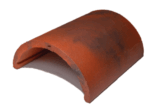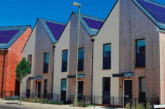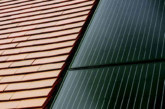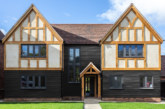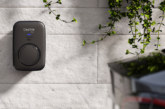
Net Zero pressures, changing legislation and growing consumer demand for access to renewable energy sources, means the specification of solar PV is escalating.
With roof aesthetics and performance both key priorities, a roof integrated solar panel, which can be installed easily in any new roof application, is generating much interest across the housebuilding sector. The solar panels and flashings can be fitted to the roof first and then the roof covering – whether clay, concrete or slate tile – can be fixed around them seamlessly.
As well as being simple to fit, the installation time for can be quick. Proprietary connections allow of simply pushing the panels to simply pushed together to create a weather-tight and secure fixing means installation can be less than one hour per kilowatt-peak.
Typical power output options such as 335Wp or 405Wp to a solution suited to the building and homeowners needs. Unobstructive designs deliver kerb appeal and the enhanced aesthetics demanded by designers and home buyers alike.
In such cases, BS 5250 sets out minimum requirements for a cold roof. Here, the standard for sufficient ventilation states the specification of 25mm along the length of the eaves for pitches of 15° degrees or less and 10mm along the eaves for pitches of more than 15°.
For warm roof definition, such as a room in the loft, ventilation is required to remove moisture laden air from the batten cavity. For a simple duo-pitch roof, the standard asks for 25mm at eaves on each slope and 5mm at the ridge. If this is not possible ventilation tiles can be used.
Also, a minimum 50mm clear air path must be maintained between the insulation and the underlay to ensure a clear airflow. Understanding underlay Some confusion exists around breathable underlays with product choices often, incorrectly, grouped together. Breathable underlay comes in two distinct forms – vapour permeable and air open. A vapour permeable solution is often viewed as the more cost-effective option Its fibrous structure is sufficiently dense to prevent liquid water penetrating, while allowing water vapour to diffuse.
However, NHBC guidelines also advocate for the use of high ventilation when specifying vapour permeable underlay to provide sufficient air flow to draw vapour out of the building. Air open underlay are generally more expensive than alternative choices. It has the lowest vapour resistance and negates the need for other roof ventilation according to manufacture claims. However, questions surround its long-term performance and its suitability with a close-fitting roof covering. Used with a close-fitting roof covering, it can risk condensation forming on the underside of the underlay and the external covering and to avoid this the batten space should, according to BS 5250, be vented.
Finally, in all cases, the use of an eaves vent system in conjunction with a ventilated dry ridge is the most costeffective way to ventilate a roof, supplying the minimum free air flow required to meet current building regulations.
Want to know more?
For more information on Marley roof systems, go to www.rdr.link/dap009

